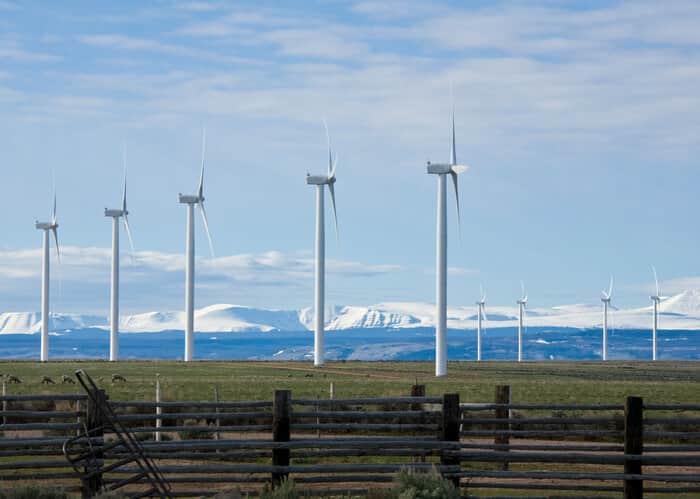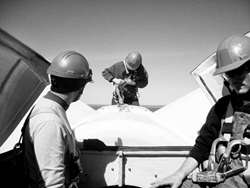A conservation group is calling on the wind industry to continue its monitoring of wind farms to protect habitats. The American Bird Conservancy (ABC) is concerned that three American bird species face especially severe threats from wind energy development.
‘Golden eagles, whooping cranes, and greater sage-grouse are likely to be among the birds most affected by poorly planned and sited wind projects,’ says Kelly Fuller, wind program coordinator for the ABC. ‘Unless the government acts now to require that the wind industry respect basic wildlife safeguards, these three species will be at ever greater risk.’Â
Using statistics from the U.S. Fish and Wildlife Service (FWS), the conservation group estimates that more than 400,000 birds are already being killed each year after being struck by the fast-moving blades of wind turbines.Â
Golden eagles have already been one of the major victims of the largest wind farm in the U.S. at Altamont Pass in California. The Altamont wind farm was sited in an area that eagles and other raptors use to hunt ground squirrels and other small mammals. Using the now-outdated towers as perches, thousands of raptors have been killed as they launch out through the spinning turbines towards their prey. While new tower designs have been developed, they don't completely eliminate the risk. Much of the additional wind build-out planned for the western U.S. is expected to occur in areas used by golden eagles.Â
Fuller also says a further threat to birds is expected to come from the major transmission line build-out required to service new wind farms. Large birds, such as the endangered whooping crane can fail to see the wires in time and die after colliding with them. The best places for wind energy development in these states overlap to a large extent the whooping crane migration corridor, and many of these areas provide attractive stopover sites. Thus, the potential for impacts to whooping cranes from future wind energy development is high.Â
The threat to more birds comes not from collisions, but from loss of their habitat due to wind farm construction. The greater sage-grouse is already reduced to a tiny fraction of its former range and population size due to degradation of sagebrush habitat in the West. The proliferation of giant turbines looming over the habitat can cause birds to abandon remaining traditional breeding grounds. The total habitat footprint from wind farms is predicted to exceed 20,000 square miles by 2030, much of which will be in states such as Wyoming, one of the last remaining sage-grouse strongholds.Â
While Whooping Cranes are protected under the Endangered Species Act and golden eagles under the Bald and Golden Eagle Protection Act, most migratory birds are only protected by the Migratory Bird Treaty Act, which has seldom been enforced to prevent mortalities such as those caused by wind development. The greater sage-grouse, meanwhile, currently receives no federal legal protection, though several states have stepped up to protect remaining core breeding areas. In the face of increasing wind development, realizing the potential for state agencies to do more will be important for this species.Â
‘We understand the problem, and we know the solutions,’ says Fuller. ‘American Bird Conservancy supports wind energy, and some operators are already working to protect birds. But we need to make all wind power bird smart now before major build-out occurs.’Â
SOURCE: American Bird Conservancy



